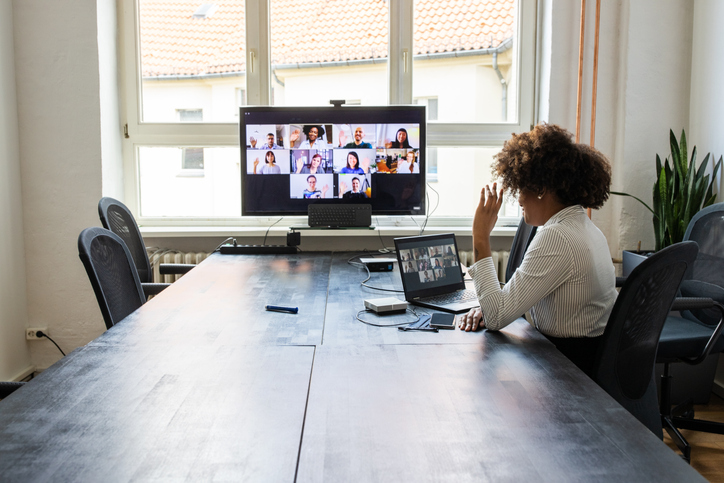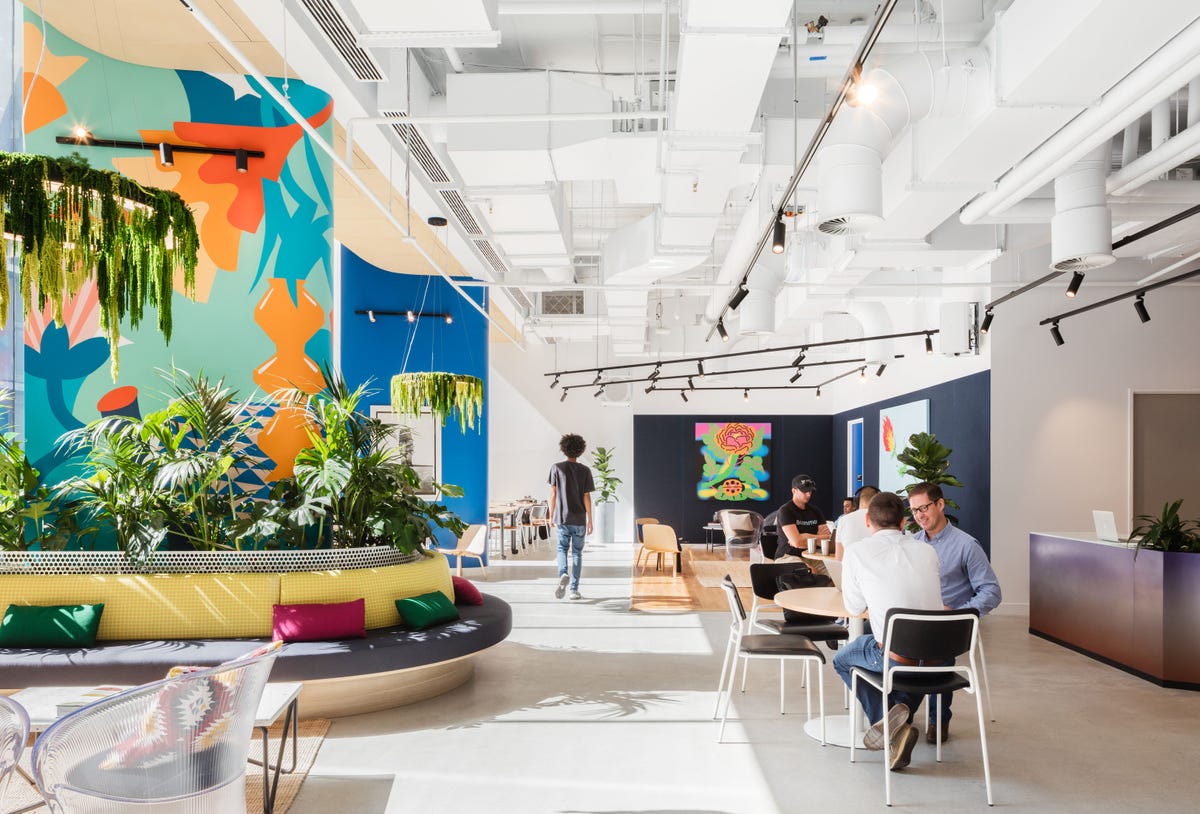
The past 18 months has forced companies to reinvent what work looks like for many employees. And those tough decisions are still going on; whether to make remote working permanent, encourage teams to return to the office when it’s safe to do so – or do something in between.
Some of the world’s largest global tech firms have already gone ahead and answered those questions, at least for themselves. Twitter led the pack when it announced last May its work-from-home plans would remain permanent, even after offices fully reopen. Square’s declaration that it would permit employees to work from home permanently followed shortly after.
PwC Australia Real Estate Advisory business partner Tony Massaro says one thing the pandemic has proven is that remote working is no longer just an experiment, but a widely embraced practice. Remote working wasn’t adopted in a widespread manner until the pandemic, he says. People talked about it particularly in times of staff shortages, but it wasn’t mainstream until the pandemic hit.
“And boy, did that make it mainstream,” he says.
THE OFFICE IS NOT GONE
Massaro argues that even though dozens of businesses have embraced flexible working, and there have been “knee-jerk reactions” by others to do without an office completely, this shift does not spell the death of the office or the central business district (CBD).
He argues the demise of business districts is overstated for a number of reasons. Businesses will always have core functions, which will require an office. There will also be different requirements for the space that companies already have.
“People say we’ll need less space but given the new ways of working, there might be a requirement for more space. Most office spaces don’t have a plethora of meeting rooms, so in order to put them in, they’ll take more space than companies already have.”
The 2021 financial results that commercial property Dexus recently presented speak volumes to these trends. According to Dexus Office executive general manager Kevin George, the company’s office portfolio experienced a “strong year” of leasing activity, with the amount of leasing space doubling year on year from 88,467 to 184,029 square metres.
“A number of industries appear to have recovered from the impact of COVID-19, with demand in Sydney relatively strong across the technology, professional services, finance, and government sectors,” George says.
“We believe that well-located, high-quality office space located in key CBD locations will continue to attract talented workforces and remain leading work and entertainment destinations.”
SEE: Half of APAC firms bypass processes to accommodate remote work
George highlights that the SME suite market was also “buoyant” throughout FY21.
“We’ve seen increasing levels of enquiry for sub-1,000 square-metre spaces, which were well up on FY20, with spaces above 1,000 square metres being only moderately higher,” he says.
Massaro agrees that there’s been a considerable spike in the number of smaller, second-tier firms taking up office in the CBD because rent is now affordable. He explains that part of what’s driving the trend is the amount of larger organisations turning to subletting to alleviate any pressure on cash flow in the short term.
“From a budget perspective, rents will be hit in the short term … you can see that in the subletting space that’s out there … a lot of subletting is short-term stuff. You might have a 20-year lease and you’re like, ‘let’s get someone in there’ … just to stop the bleed,” he says.
REIMAGINING THE OFFICE
For businesses that choose to stick with the space they have, they are now being forced to reconsider where and how the physical office space fits into the new equation of how people work.
What business needs to decide are a few things, he says: what type of work they are going to do, how they are going to do it, who they want to do it – because flexible and remote working opens up an entire new geographic spread of employees – and then what kind of workspace they are going to need. “That’s where it starts to have that impact on space and offices,” Massaro says.
SEE: Sydney Uni research finds remote working saving Aussies time and money
Salesforce, for instance, is still on track to move into its new Australian headquarters, dubbed the Salesforce Tower, in late 2022, even though it has rolled out permanent remote work plans for its staff. But the cloud giant will now redesign its office spaces so it features more “community hubs” in response to the new climate.
“For us, our real estate is about more than architecture and design. It’s about creating a place that has a lasting positive impact on our employees, partners, customers, communities, and the environment around us,” Salesforce president and chief people officer Brent Hyder said back in February.
“So when we thought about how to reimagine our spaces, we saw an incredible opportunity to create the office of the future. The majority of our employees will go back to the office at least some of the time. And we’ve learned that 80% of our employees are hungry for the connection, camaraderie, and innovation that come from gathering in-person.
That means the company is redesigning its workspaces over time as community hubs to accommodate a more hybrid workstyle. Gone are the days of a sea of desks, it says, with the plan to create more collaboration and breakout spaces to foster the human connection that can’t be replicated remotely.
Atlassian, another company that has also endorsed flexible working, is also going ahead with opening a new office tower in Sydney, due for completion in 2025, and has similar plans.
“The space that we are building will be highly sustainable and highly flexible. it will be purpose-built for the future of work, for tomorrow’s world, not today’s. Even with a highly distributed workforce, we’ll need a place to come together. Now we can design this space especially for these new ways of working,” Atlassian co-CEO and co-founder Scott Farquhar said in June.

For Cisco, the story is not too dissimilar. While the company recently announced it would roll out a hybrid working plan, it also said offices have a role to play in the way its employees will work.
“The amount of time we’ve spent working remotely and refining our skills in doing that is great, but we miss personal interactions, and we miss being able to get in and work as a team,” says Cisco workplace technology head, Chris Anderson. “There’s still absolutely a place for the physical environment.”
What the networking giant has focused on is changing the physical space into something more “purposeful”, so that it’s less about allocating staff personal desk space and more about utilising it for collaboration. Before the pandemic, 95% of the company’s office space was allocated to individuals, Cisco said.
Cisco has also invested in plugging new technologies into its offices to further facilitate the hybrid-working model. These include delivering wireless connectivity into its buildings, introducing intelligence to help Cisco better understand how its physical space is being used, as well as introducing office environment sensors to measure temperature, sound, humidity, and air quality.
“The opportunity for us is to start using technology. What we’ve done in the past is we’ve understood how important technology is inside a building, but we’ve never really intrinsically linked technology into the workflows inside buildings,” Anderson says.
“Now is the opportunity to really align technology properly inside physical buildings, and drive intelligence, drive automation of activity inside the meeting spaces and the office space.”
WORKING OR COWORKING?
In addition to making changes to existing office spaces, an equally popular option for businesses, according to Massaro, is moving into coworking spaces. He says it’s becoming an appealing option as companies try to contend with the uncertainty of the pandemic.
According to WeWork Australia and Southeast Asia general manager Balder Tol, over a third of WeWork members in Australia that identify as technology companies have embraced coworking spaces as viable options.

Tol reckons part of the attraction is coworking spaces offer businesses flexibility that has not typically been available with a traditional office.
“The pandemic has changed the way we live and work, and flexible office space is emerging as an attractive option for workers and companies that are frustrated with the bedroom-as-boardroom life, but don’t want to return to a traditional office format,” he says.
“Flexibility of time, space, and location is built into our business model and is something that’s become an even more attractive incentive to businesses and employees alike, as they look to adapt to the new normal.”
The feelings are mutual over at Hub Australia. “Scaling tech companies have always been particularly drawn to Hub’s offering as they have a constant need to attract and retain talent. Sixty-five percent of our customer base nationally classify themselves as tech companies,” Hub Australia founder and CEO Brad Krauskopft says.
“We are seeing more large companies use Hub, not just for the flexibility of the agreements, but because companies now need to provide an experience that goes beyond just a place to sit at a computer all day. Coworking operators have years of experience on how to best achieve these engaging workspaces.”
Irrespective of which way businesses chooses to operate, the investment that businesses make – or don’t make – in an office space will be an iterative process going forward.
“Part of that will be saying, ‘Will this different type of work we want to do have a higher or lower margin, therefore do we have more or less money,’ so therefore we’ll need to spend this much on space. It becomes an iterative and very business-specific process,” Massaro says.





















